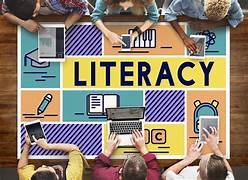As education evolves, so do the methods educators use to engage students and enhance learning. Innovative teaching methods are essential for adapting to the needs of today’s learners, who thrive in dynamic, technology-rich environments. By incorporating diverse strategies into the classroom, teachers can foster creativity, critical thinking, and collaboration among students. This article will explore several innovative teaching methods that can transform the modern classroom and enhance student learning experiences.
1. Flipped Classroom
The flipped classroom model flips traditional teaching on its head. Instead of introducing new concepts during class time, students learn the material at home through videos and online resources. In-class time is then devoted to interactive discussions, group projects, and hands-on activities. This approach allows students to learn at their own pace and come to class prepared to engage with the material.
Benefits of the flipped classroom include increased student engagement and a more personalized learning experience. Teachers can address individual needs and provide additional support during class time, leading to deeper understanding and retention of knowledge.
2. Project-Based Learning (PBL)
Project-Based Learning is an instructional approach where students engage in real-world projects that require critical thinking and problem-solving skills. In PBL, students work collaboratively on a project over an extended period, culminating in a final product or presentation. This method allows students to explore topics in depth and apply their knowledge to practical situations.
PBL fosters collaboration, communication, and creativity, as students often work in teams to achieve common goals. By focusing on real-world problems, students develop a sense of ownership over their learning and can see the relevance of their studies to their lives.
3. Gamification
Gamification incorporates game-like elements into the learning process to motivate and engage students. This method can involve using digital games, point systems, or leaderboards to encourage participation and achievement. By adding a competitive or fun element to learning, gamification can make challenging subjects more enjoyable and accessible.
Benefits of gamification include increased motivation and improved retention of information. Students are more likely to engage with material when it feels like a game rather than traditional learning. Teachers can create a more interactive and stimulating environment, encouraging students to take risks and experiment.
4. Collaborative Learning
Collaborative learning emphasizes group work and peer interaction as essential components of the learning process. In this approach, students work together on tasks, share knowledge, and support each other’s learning. This method fosters social skills and helps students learn to communicate effectively, resolve conflicts, and appreciate diverse perspectives.
Collaborative learning also allows students to take ownership of their education. When working in groups, students can explore ideas, ask questions, and provide feedback to one another. This active participation can lead to a deeper understanding of the material and improved problem-solving skills.
5. Technology-Enhanced Learning
Incorporating technology into the classroom can enhance teaching and learning in numerous ways. Tools like interactive whiteboards, tablets, and educational software can make lessons more engaging and interactive. Online platforms can facilitate communication and collaboration among students, even outside of the classroom.
Technology-enhanced learning allows for personalized learning experiences. Teachers can use data to identify student strengths and weaknesses, adapting instruction to meet individual needs. Additionally, students can access a wealth of resources online, enabling them to explore topics that interest them further.
6. Mindfulness and Social-Emotional Learning (SEL)
Integrating mindfulness and social-emotional learning into the classroom can significantly impact students’ well-being and academic success. Mindfulness practices, such as deep breathing and meditation, help students manage stress and improve focus. Meanwhile, SEL programs teach students to understand and manage their emotions, build healthy relationships, and make responsible decisions.
By fostering a positive classroom environment that prioritizes mental health, teachers can create a supportive space where students feel safe and motivated to learn. This holistic approach addresses the needs of the whole child and encourages a balanced approach to education.
Innovative teaching methods modern classroom
Innovative teaching methods play a vital role in creating engaging, effective, and inclusive learning environments for modern classrooms. By embracing strategies like flipped classrooms, project-based learning, gamification, collaborative learning, technology-enhanced learning, and mindfulness, educators can inspire students to reach their full potential. As education continues to evolve, teachers must remain adaptable and open to new ideas to meet the diverse needs of their students.



